We're forming America's infrastructure
Custom Tailored Bridge Formwork Solutions
Major infrastructure projects are the life blood of any community. And when they are built, it’s the foundational elements that are most critical. They need to be designed, planned and executed perfectly in order to endure and last for generations. They must meet exacting engineering and construction standards and stand up to the stress and loads that come from a lifetime of use. This is no place to take even the slightest shortcut in planning, materials or forming.

Construction companies don’t have to settle for piecemeal forms and systems that don’t precisely fit their unique approach to infrastructure projects.
That’s because we at Doka are true experts at complex infrastructure projects, providing fully custom-tailored solutions and product options that support your precise project plan and ambitious expectations.


And with our deep expertise in planning & project management, Doka can transform the trajectory of a project, giving developers, contractors and construction companies more ways to work and succeed in their most complex infrastructure projects.
Doka. We're forming America's Infrastructure.
See how we are forming America's Infrastructure also in the world of Social Media
Share your Bridge Projects with us using hashtag #LetsFormABridge for a chance to win a Plush Doka Beaver!
_Understanding requirements
The bridge from knowledge to experience
Our capabilities span far and wide. We focus on the formwork-engineering challenges right from the design phase. Even at this early stage, we start contributing our knowledge so that the works can be carried out swiftly, efficiently and economically. We bring much more to the table, still: a solution in form of the right formwork system.
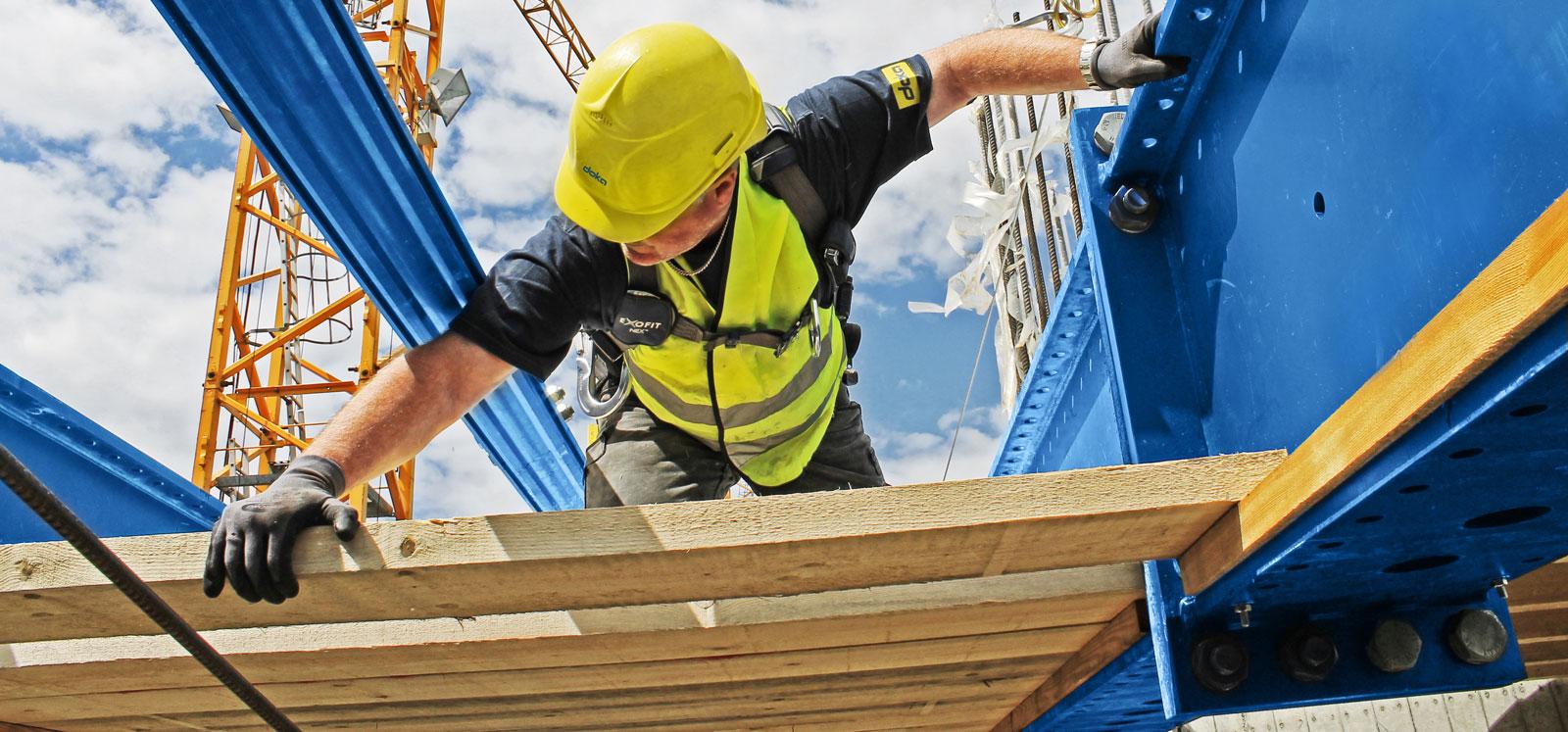
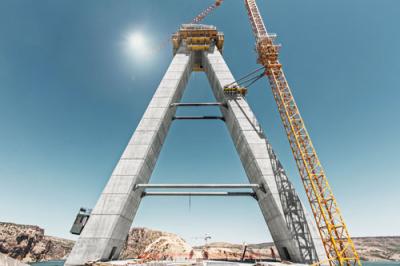
Pylons and piers
Piers decrease the width of the superstructure support centres between the abutments, thereby permitting a lower overall height. They mostly take the form of single or paired piers. On cable-stayed or suspension bridges, the central support takes the bridge loads, which are suspended from it. This is referred to as a pylon. They basically take the form of self-supporting pylon towers, A or H pylons or portal pylons.
Your benefits with Doka
Our extensive planning expertise and high-performing crane-climbed and automatic climbing formwork systems can handle great variability in the design of piers and pylons, regardless of geometry, height and dimensioning.
Shoring towers
If the superstructure of a concrete bridge is not far above the ground, it can be constructed cost-effectively and efficiently using falsework. Falsework is an auxiliary construction used for holding building materials and systems in shape, particularly in the field of concrete bridge construction. On multispan bridges, the superstructure is mostly cast a section at a time using a single falsework construction.
Your benefits with Doka
Cost-effective planning and on-time delivery of materials-optimised shoring scaffolds for transferring high loads from bridge superstructures safely and economically.
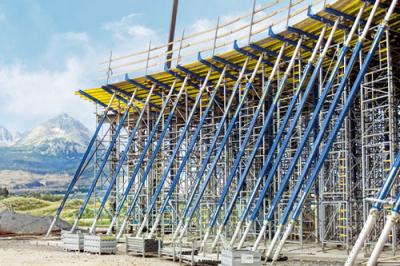

Cantilevering
The bridge sections are cast one after the other by a pair of cantilever forming travellers that work outward from a pier (pier head) and carry the formwork, rebar and the weight of the fresh concrete. In most cases, this takes place more or less symmetrically to either side of the pier. The casting sections are generally between 3 and 5 m long.
Your benefits with Doka
Outstanding cost-efficiency and rapid equipment availability, made possible by Doka's rentable all-in-one system. Also, high certainty regarding planning and execution, thanks to thorough project support from Doka, taking in everything from detailed planning to co-ordination with the superstructure designer to on-site support by the Competence Center for Cantilever Construction.
Composite bridges
Put in simplified terms, the longitudinal steel girders of the bridge are connected to the CIP concrete deck slab by means of shear connector studs so as to obtain a shared (i.e. 'composite') load-bearing effect. Having the longitudinal bridge girders prefabricated at the plant will result in a significantly reduced construction period. The composite technique delivers low-cost, durable, low-maintenance bridge-deck solutions, the reason it is used for structures ranging from small overpasses to large viaducts.
Your benefits with Doka
Cost-effective solutions for widely differing bridge geometries are achieved by using rentable, variable, all-in-one systems and the comprehensive project support provided by the Composite Bridge Competence Center.
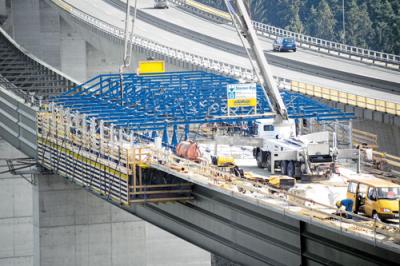
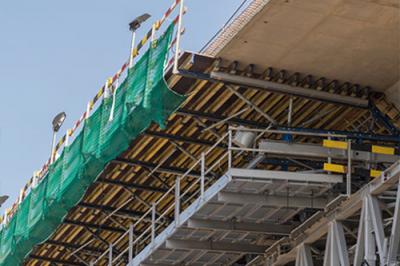
Launching-girder equipment
Bridge superstructures that are built using launching-girder equipment are usually constructed one span at a time on service girders that can be relocated along the longitudinal direction of the bridge, without mid-span support between the bridge piers. The launching-girder method is best used for multispan bridges with more than 7 spans, for bridging deep valleys, and where access is made difficult by obstacles such as nature reserves, lakes and rivers, or by the need to bridge existing traffic routes.
Your benefits with Doka
Project-specific planning and pre-assembly of high-performing formwork systems enhanced by our long-standing collaboration with leading suppliers of launching-girder equipment mean smooth, efficient construction progress.
Incremental launching
The continuous superstructure is cast a section at a time behind an abutment in an on-site fabrication area referred to as "casting yard". Each section cast there (i.e. each "cycle") is "pushed" across the piers, together with the previously cast sections, to make space for casting the next section. This method is most often used on longer bridges with straight or near-circular ground-plans and with uniform summits or sag-curve radii in the front elevation.
Your benefits with Doka
Project-specific planning and pre-assembly of adjustable formwork systems for casting-yard construction, with practical formwork closing/opening logic for time- and cost-optimised workflows.
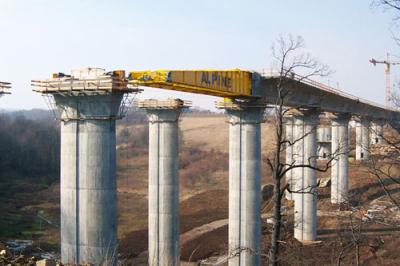

Arched bridges
The arched bridge is surely the most visually impressive constructional bridge design. Particularly when it comes to crossing deep ravines, arched bridges are the preferred design. The most common construction methods are cantilevering and conventional falsework. An alternative technique here is the lowering-arch or "swivel-in" construction method.
Your benefits with Doka
Extensive planning services, and rentable formwork solutions that can be specifically tailored to the statics of each superstructure, for optimised load transfers and ensuring that the project progresses to plan.
Formwork solutions to fit your project's needs:
For ever-higher quality requirements and differing bridge structures
Contact Doka USA for large-scale infrastructural construction projects
The Doka USA team of expert engineers works in close cooperation with the Global Expertise Center for Infrastructure at our headquarters in Austria. Together we support our clients with a spectrum of solutions, expertise and services that can change what’s possible in even the most complex infrastructural projects. From abudments, pier stems, caps, and soffits, to pier spans, decks and pylons we’ve got your concrete bridge solutions covered.
Get in touch with our experts.





















